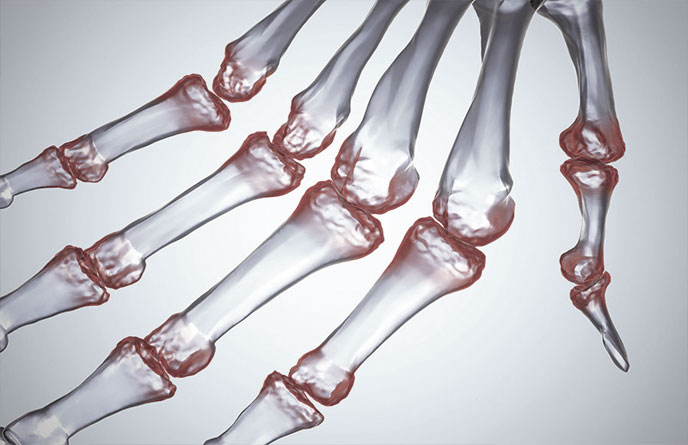Rheumatism is a word of ancient Greek origin and was used in the sense of accumulation of fluid with bad properties in the joints. Although rheumatic diseases have been known since 8000 BC, our knowledge about the causes, courses and treatments of diseases is 20. rheumatology has increased with the development of the branch of Science in the century.
Undoubtedly, one of the most important complaints that brings the patient to the doctor is pain. One of the most important symptoms of rheumatological diseases is pain. But one point that should not be forgotten is that pain is in the background, even rheumatological diseases that do not cause pain at all.
In the treatment of rheumatic diseases, Rheumatology Specialist, Physical Therapy and Rehabilitation Specialist, Orthopedic Specialist and other specialties should work as a team.
The treatment of rheumatic diseases, which cause a wide variety of complaints and organ involvement, is now possible in today’s conditions. In recent years, a path has been taken in the treatment of rheumatism with drug research that has gained momentum. However, it is not possible to completely eliminate most rheumatic diseases. It requires constant physician-patient cooperation. it should be known that the disease may flare up from time to time. The treatment is long-term and may even last a lifetime. The purpose of treatment ; it is to eliminate complaints, prevent possible organ involvement that may occur, and ensure that the patient’s comfort of life is maintained at the highest level.
The most common rheumatic diseases are listed below:
Rheumatoid arthritis
Spondylarthropathies and ankylosing spondylitis
Behçet’s disease
Connective tissue diseases: systemic lupus erythematosus, scleroderma, mixed connective tissue disease, Sjögren’s syndrome and dermatomyositis, polymyositis
Antiphospholipid Antibody syndrome
Vascular Inflammations: polyarteritis nodosa, Takayasu arteritis, giant cell arteritis and other systemic vasculitis
Familial Mediterranean Fever
Acute articular rheumatism
Reactive arthritis
Crystal arthritis
Infectious arthritis
Amyloidosis
Metabolic and degenerative diseases: osteoarthritis, osteoporosis, osteomalacia and Paget’s disease
Rheumatic signs of other systemic diseases
Rheumatism (Rheumatism)
A general term used to describe any pain and November aches in the bones, muscles, joints, tendons, ligaments or joints and the surrounding tissues. Unlike arthritis, its boundaries are not clearly defined. Therefore, the term “rheumatism” also includes the word “arthritis”.These pains and pains may not always be explained by an underlying pathology. Therefore, in addition to the diseases defined in rheumatism, there may also be tables accompanied by regional pain such as neck pain, tennis elbow, low back pain, and widespread pain such as fibromyalgia.
In most patients with inflammatory rheumatoid arthritis, these painful tables may also be accompanied. In many inflammatory systemic diseases (involving the whole body), arthritis occurs only as a symptom of the disease.
Rheumatic Diseases (rheumatic diseases)
It refers to all types of arthritis and rheumatism. 150?there is a rheumatic disease nearby. Most of the inflammatory ones of these are explained by the mechanisms of creating diseases for the body itself with the improper functioning of the immune system and/or inflammatory mechanisms in the most basic sense.
How to Become a Rheumatologist, What Does He Do? (Rheumatologist)
A doctor who specializes in the diagnosis and medical treatment of joint inflammations and other rheumatic diseases. Doctor who has received rheumatology education (3 years) after internal medicine specialty (5 years) in a more limited sense; rheumatology specialist. In addition to inflammatory systemic (involving the whole body) and joint-specific rheumatic diseases, degenerative, metabolic and mechanical musculoskeletal problems are also included in the field of expertise. Nov. A rheumatologist is an internal medicine specialist because of the internal organs (heart, kidney, lung, liver, gastrointestinal tract, etc.) that can often be seen in rheumatism patients depending on the disease itself or treatments.) it also has the infrastructure to solve most of its problems.
What is Arthritis? (Arthritis ,Plural Arthritides)
In addition to joint pain, joint swelling indicating joint inflammation, an increase in temperature on the joint, redness on the joint, or the presence of one or more of the signs of restriction of joint movements, joint inflammation. 150, which causes arthritis?there are different diseases close to it. The classification of these diseases, diagnostic criteria and treatment approaches have been jointly determined and accepted in the international literature to varying degrees according to the diseases. Therefore, diseases that cause arthritis include diseases such as rheumatoid arthritis, osteoarthritis, infectious arthritis, psoriatic arthritis, arthritis associated with inflammatory bowel disease, ankylosing spondylitis, gout Dec.
Causes of Arthritis and Rheumatic Diseases
Although we know more and more about the mechanisms of these diseases, relatively less is known about the causes that initiate the disease.
For this reason, it is possible to mention the factors that facilitate the occurrence of the disease for most rheumatic diseases for this day. Among them, as the main group, Dec,
Genetics : An increasing relationship is being established between immune system diseases and tissue fitness genes. Dec. But the genetic foundations of contracting many rheumatic diseases are based on more than one genetic predisposition, that is, they are considered complex.
Environmental : exposure to certain microbial and chemical factors is known to disrupt the balance of the immune system of some bacteria and viruses encountered by individuals.
Physiological : Factors such as hormones and age status can be counted.

